
Our family loves monopoly. Living in Taiwan, I tried too engage my children with games and monopoly is their #2 favorite. #1 is UNO. We have multiple sets of both. This one is about Animal Crossing- which so far is the most interesting for game play and quite different from other Monopoly sets.
*apologies ahead of time. I’m writing this on my phone, so sorry about any typos or autocorrects that I didn’t notice.
If you think organizing the traditional $$ and property is time consuming, look at this.
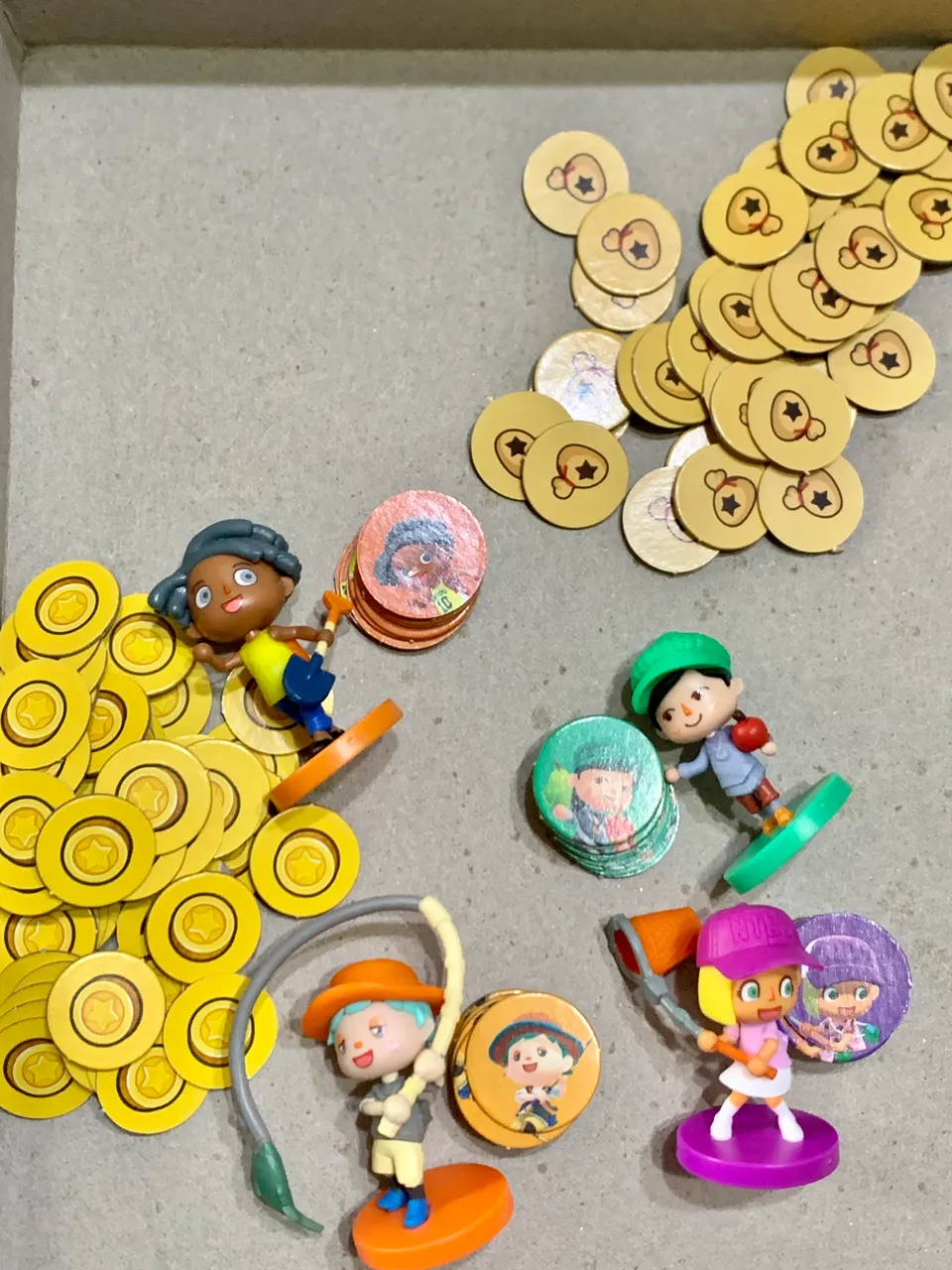
Okay, there are 4 characters. Each character has 10 property markers to show who landed on it first (like buying a property without $). Also in the pictures are tokens that look like gold coins, but the instructions call them bells. The bell bag = 5 bells.
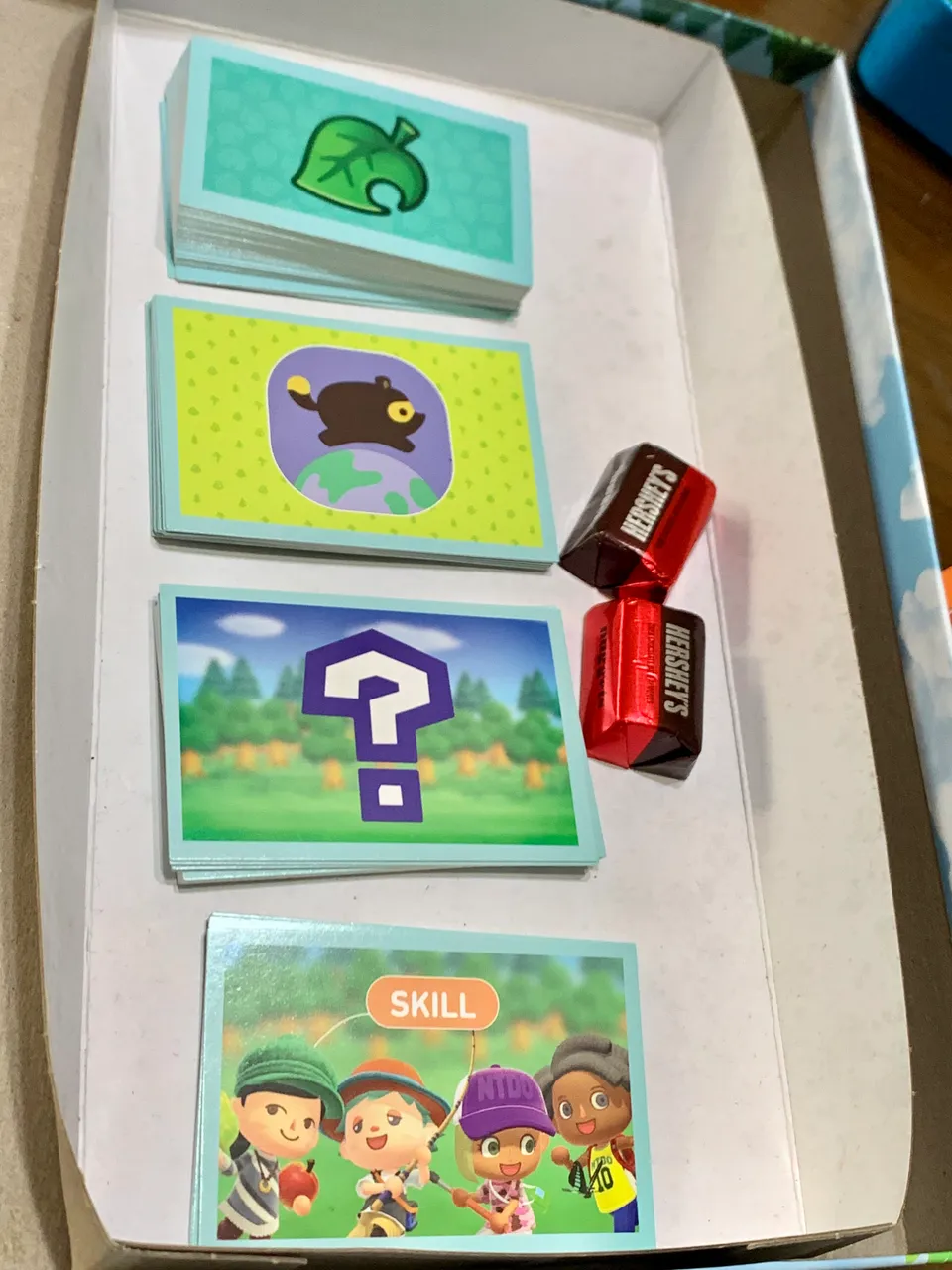
Four card types. Chance, Nook miles (community chess), and decorations that can be bought with bells when passing GO. Any player owning 7 decorations ends the game.
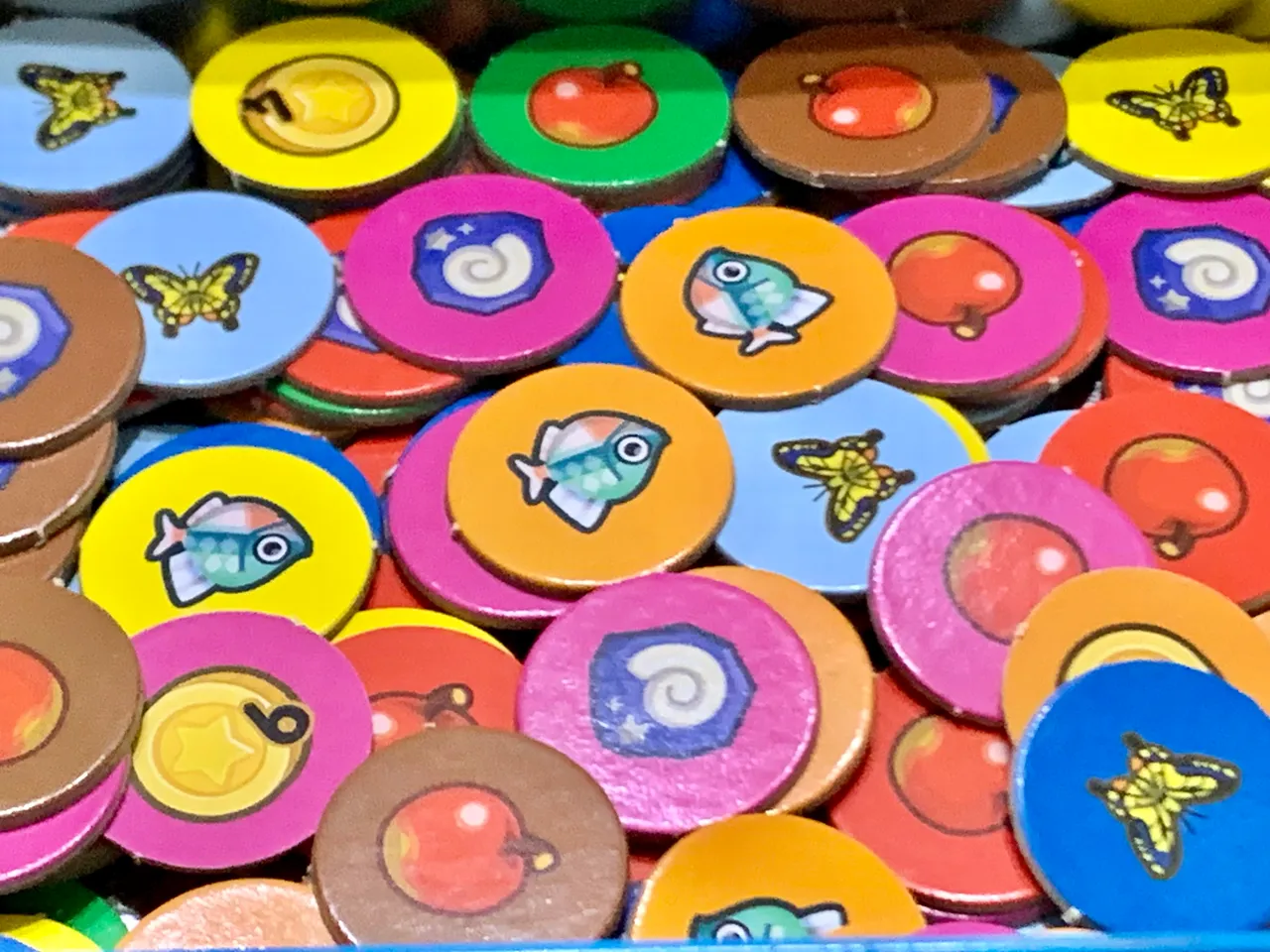
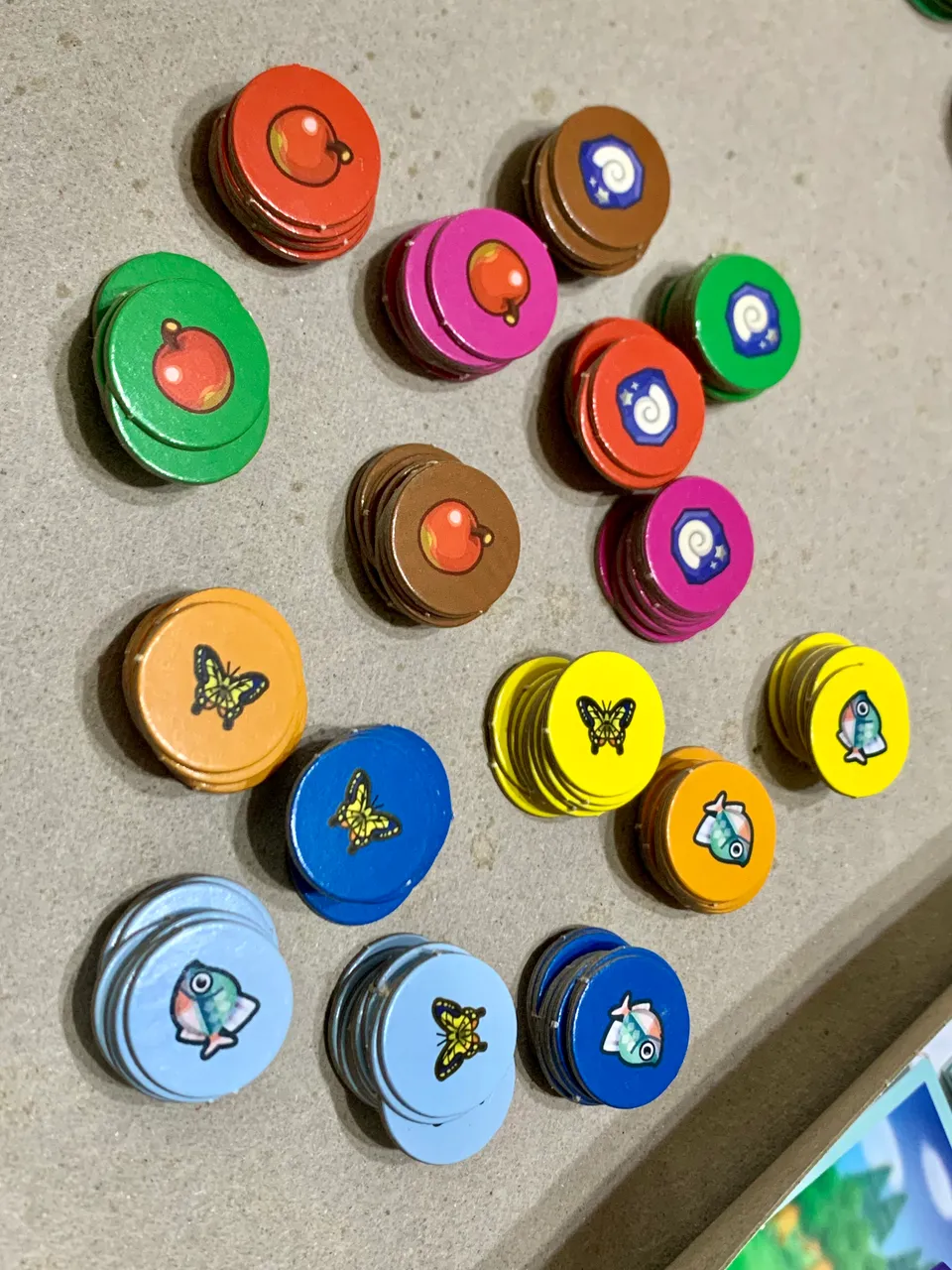
Resource tokens. Just like traditional monopoly are the colors for the property sets, but no bonus. Resources are apple, shells, fish, and butterflies. So for example, boardwalk’s spot is a blue fish. The first person to land on it gets a blue fish resource token and placed their character token on it. If another player already landed on it, both players get a blue fish token. So no paying each other rent and no bankruptcy.
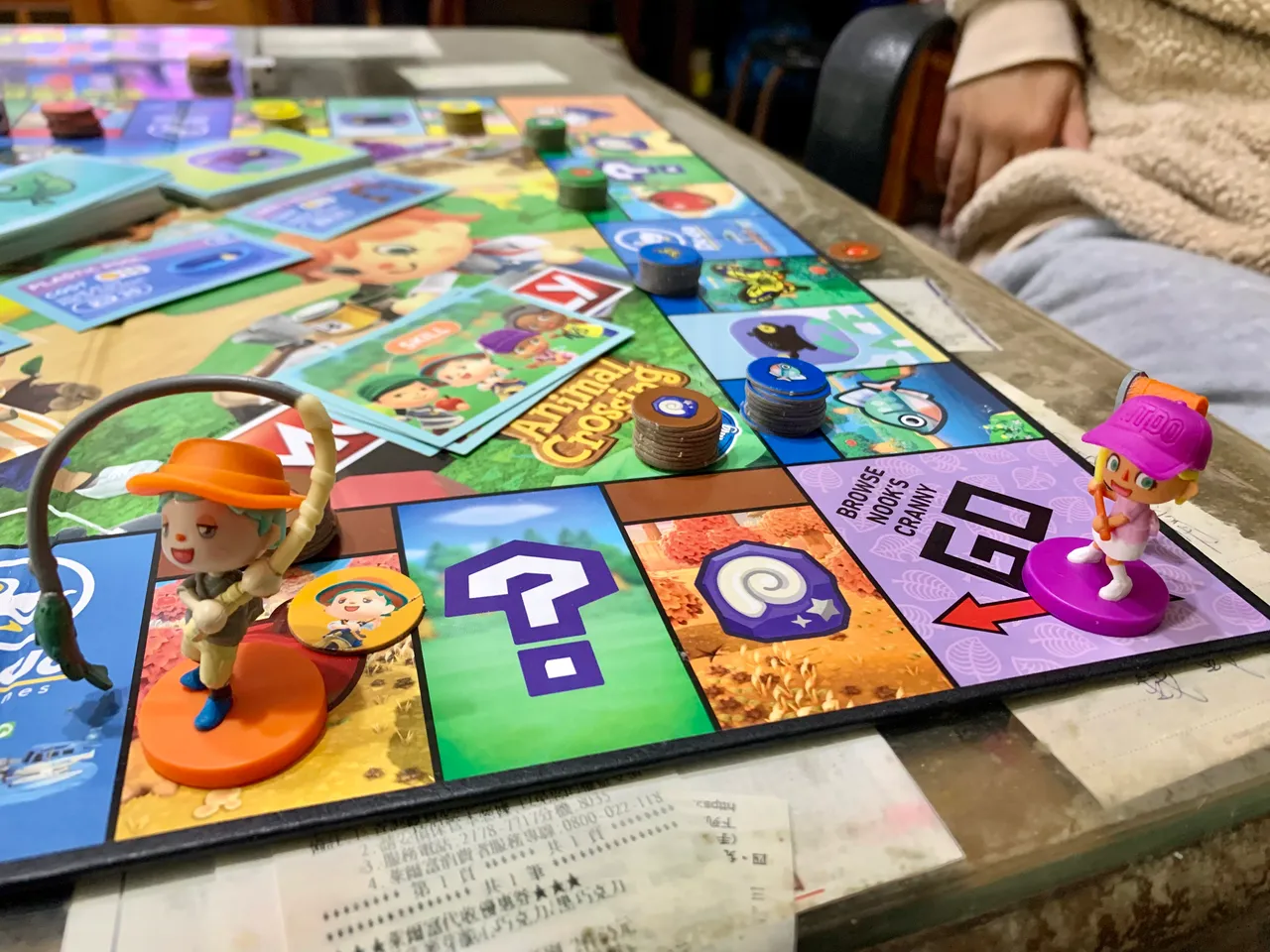
Here’s “blue fish” or boardwalk.
Resource tokens have a resource on one side and bells on the other.
Dice. There are two dice. Both are simple 6 sided ones. One is numbered 1-6. The other has the pictures of the 4 resources and two leaves. (Wilds) Each turn your role the dice, move the number. The resource die tells you the type of resource you can sell to bank to get bells. Leaves represent wild or any one resources.
The basic corners. Go, go to jail, free parking, and jail are there. We use penalty fees to place on free parking. It’s not in the rules, but we always do that.
One difference is the railroads are Dodo airlines and you can travel to any other dodo airlines.
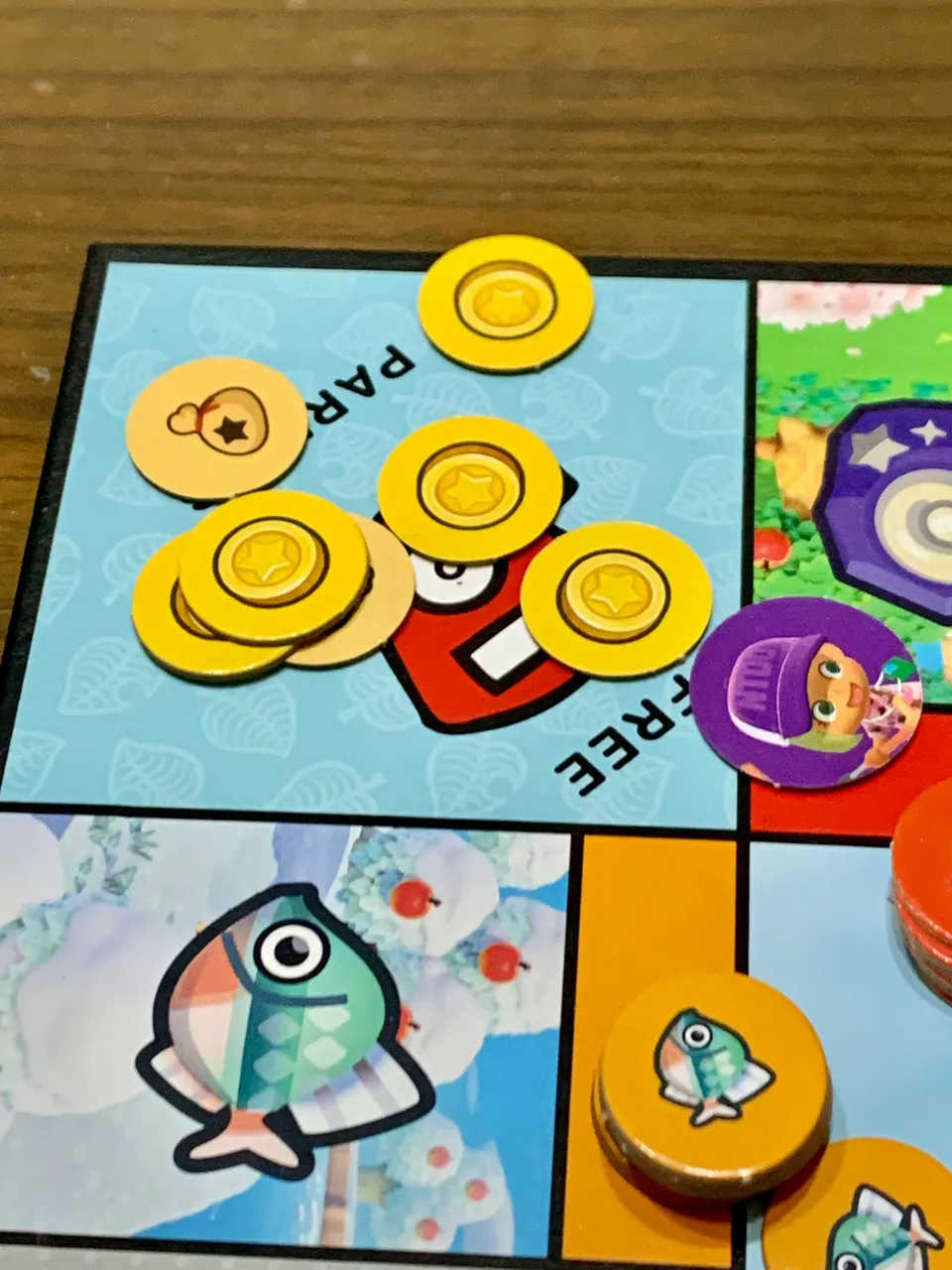
Cards
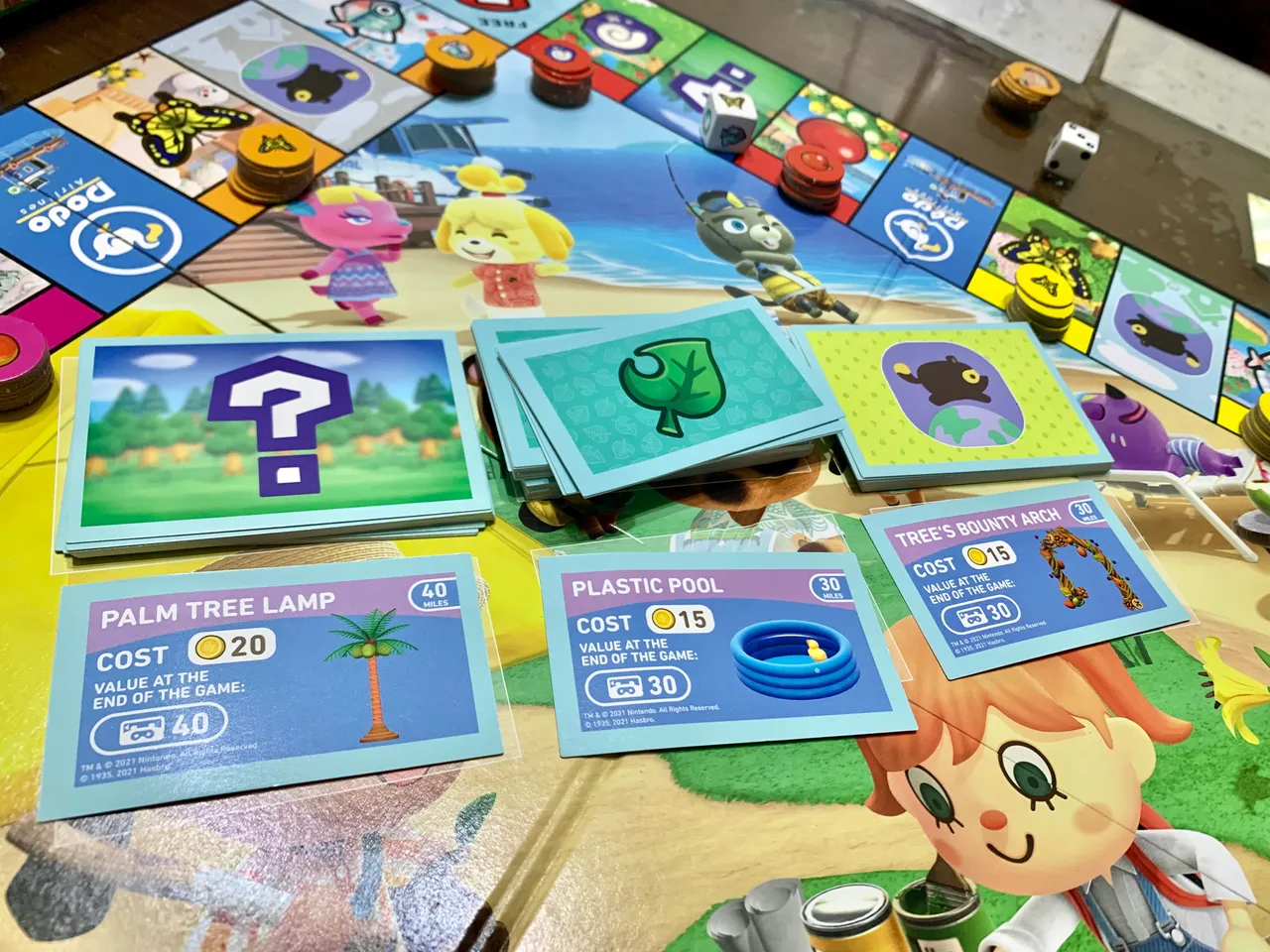
Chance and nook miles function as chance and community chess. In between is the decoration deck. Three decorations are placed face up in front of the decks. These can be purchased for bells when passing go. Decorations have nook mile points and those are added up in the end to determine the winner. Nook miles can also be obtained by the nook mile cards, but require resources to activate the points at the end of the game. In the picture below, pay the resources and you can count the extra points at the end.
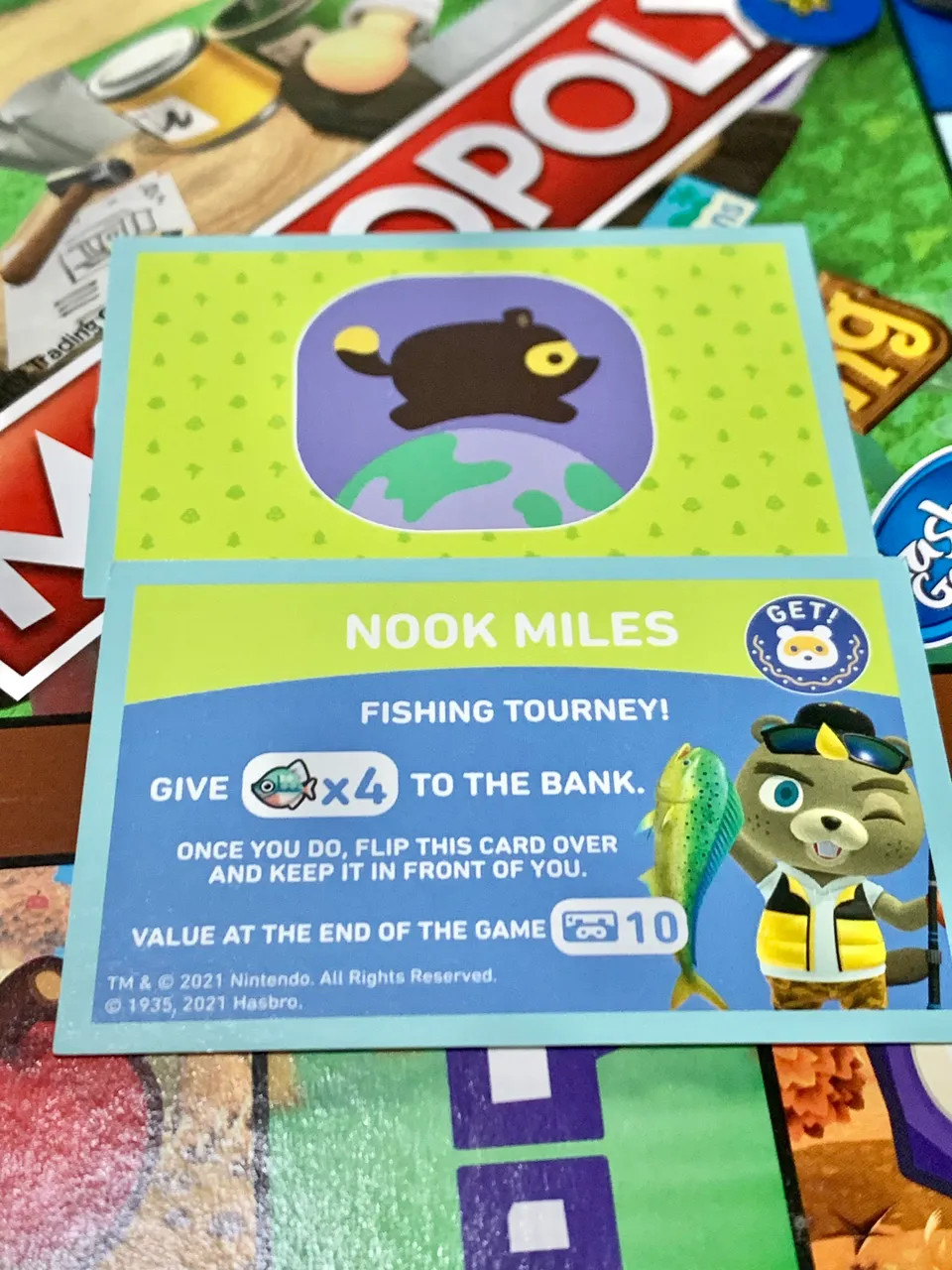
Next is chance. Collect or pay, nothing different.
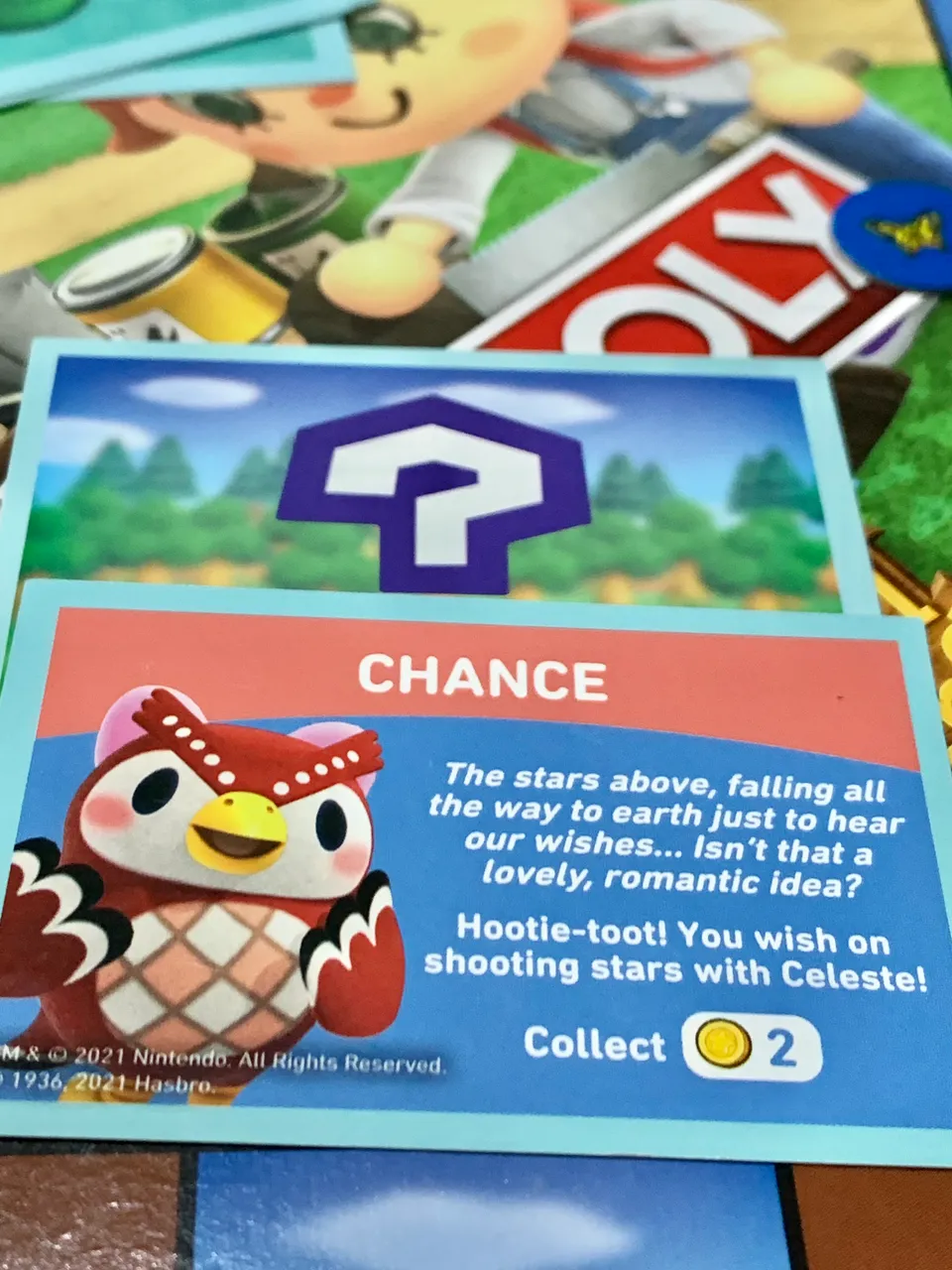
Next are the decoration cards. Different costs have different nook miles values.
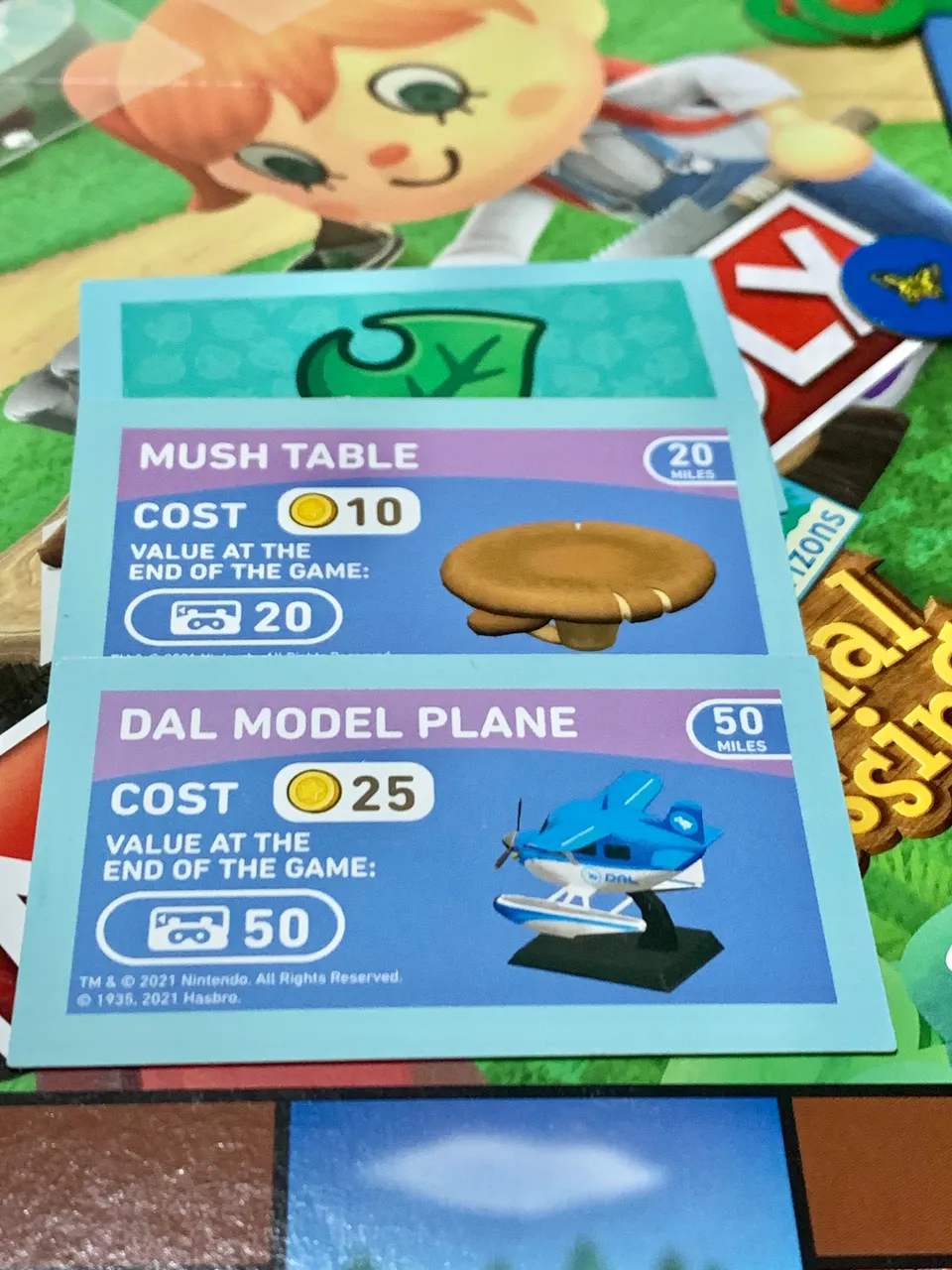
There is one more type of card that I forgot to photo. It’s a skill card. After passing go the first time, you get a permanent skill card that gives your character a unique advantage. For example, when landing on go and selling a resource, collect an extra 3 bells.
Anyway - game play
So roll the dice and go around collecting resources. Sell them for bells to buy decorations or keep the resources in case you get a nook miles card that requires resources to activate extra points.
Resource get recycled if used or cashed in, so there is always a supply. Just like chance our community chess cards in traditional monopoly.
When a player has 7 properties, count the nook miles value of the property and any cards that were activated providing extra nook mile points.
Quite the interesting and quick monopoly game. It usually takes us about 15 minutes. No haters or hard feelings when landing on property.
The worst part is set up. All those tokens have to be separated and stacked, then placed on the correct property. By the end of the game, the board gets quite messy. However, it’s a great way to teach responsibly and how to keep the tokens separated when storing the game. We use very tiny ziplock bags, but we will craft a special small box with tiny slots for the tokens.
